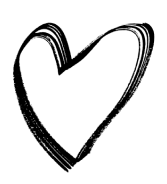Seven-Figure Dropshipper Paul Lee's Facebook Ads Formula
Jessica: Now, in just a bit, Paul Lee is going to go into his Facebook ads formula. Paul has made over seven figures with multiple dropshipping stores. These days, he has his virtual assistants run his stores and he offers private one-on-one mentoring to aspiring ecommerce entrepreneurs. Okay, so we […]
Jessica: Now, in just a bit, Paul Lee is going to go into his Facebook ads formula. Paul has made over seven figures with multiple dropshipping stores. These days, he has his virtual assistants run his stores and he offers private one-on-one mentoring to aspiring ecommerce entrepreneurs.
Okay, so we know that dropshipping and Facebook ads go hand in hand. You start a dropshipping store with Shopify and then you drive traffic to your store with Facebook ads. You see Facebook ads are great at driving store traffic, but they’re also great at driving you crazy. They are so difficult to learn because there isn’t a one-ad set-fits-all Facebook ads formula.
That’s why we decided to do things a little differently. We gave four successful dropshippers a trending product from AliExpress, and then we asked each dropshipper to take us through their ad process from creating the ad itself to launching the Facebook ad campaign. These dropshippers did not let us down, but they also did not agree.
Paul: No, see, that’s not right.
Jessica: Every dropshipper had their own unique strategy for running successful Facebook ads and their own Facebook ads formula. So to make it easier for you to follow along, we created a blueprint so that right after the video, you can start running your own ads. Okay, ready to hear from the dropshippers?
I wanna say something before we begin. We’re gonna be going in-depth on Facebook ads, so we’ll throw around acronyms like CBO and we’ll talk about things like conversion events. If you don’t know what any of that means, don’t worry, take a look at Oberlo 101. It’s the ultimate course for starting your first online store and scaling it with Facebook ads. So to learn more, enroll now.
Alright, time to get into Paul Lee’s winning Facebook ads formula. Paul, I sent you a phone case lanyard and I told you, “Create a Facebook ad for this, or show me how you would create an ad if you had a cold Facebook Pixel, you were a beginner dropshipper, all of that?” What was your first reaction to that assignment?
Paul: The assignment, I thought it’d be really easy. My reaction was, first the product, I wouldn’t have ever chosen that product.
Jessica: Really?
Paul: Yeah, you said that it sells pretty well, right? In Berlin?
Jessica: Yeah, we see it all the time.
Paul: It might work.
Jessica: Wait, I’m curious. Why were you like, “Ugh, this product sucks.”
Paul: I don’t know, ’cause I’m not the customer, so I can’t imagine buying it. And then also, it doesn’t really have that wow factor effect for me. I couldn’t imagine having a wow factor for that, but who knows?

Jessica: Yeah. I know, based on our interview, you usually have a lot of criteria for determining whether a product is even worth testing. And in this case we were like, “We don’t care about your criteria, advertise it.” Given that, I know we put you in some constraints there, what was your first approach?



Creating a Product Page and Product Video
Paul: My first approach would… If I determined this product would be test-worthy, I would go ahead and do the product page and then go into the video. I like to aim for less than two hours total for all those things. And then I go into Facebook ads and working on getting things right for Facebook Ads formula.
Jessica: I’m interested because you’re the first merchant to talk about product pages when we’re talking about Facebook ads. Can you say a little bit about how you would build this product page before the ad?
→ Click Here to Launch Your Online Business with Shopify
Paul: There are different components: You have the product page, you have the video, and then you have the ad copy. All of these are meshed together. What I do is I first hit the product page and then I already have that content, so that content also gets distributed into a video. For example, with a video ad, you might have different captions and different kinds of benefits, those were derived originally from the product page. And then you have the ad copy, that’s also derived from the product page as well.
Jessica: Okay, so by working on the product page you’re developing, what are all the problems this product might solve and all the features, and you’re putting it all in one place?
Paul: Mm-hmm.
Jessica: And then from there, you tease out what might go into a video, what might go into your ad copy.
Paul: Mh-hmm.
DIY or Outsource Your Product Video Production
Jessica: I see. Since we are focusing on just the Facebook ad, let’s talk a little bit about creating a product video for a product like this. It’s not something you’re excited about, how would you go about creating a video?
Paul: The Facebook Ads formula likes videos. But the thing is, I never create videos myself. I have dedicated video editors, but I can walk you through the process of how to easily find the video editor, know they’re good, and build a long term relationship with them.
Jessica: That’d be really cool because so far we’ve only talked about how to create videos yourself, but I know a lot of dropshippers would rather pass that off.
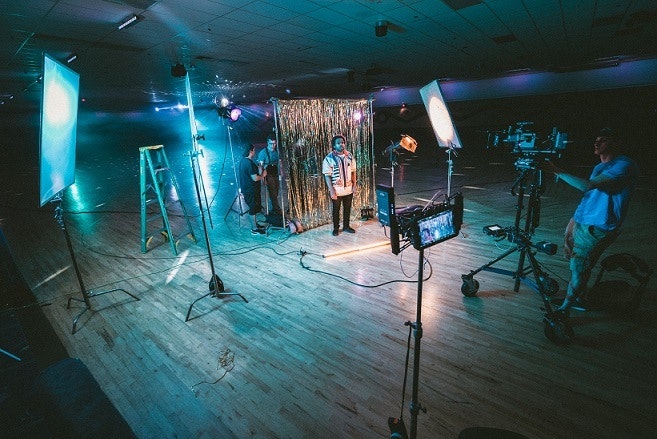
Paul: Definitely.
Jessica: Okay, let’s dive into my laptop and take a look.
Paul: Alright.
Jessica: Where should I head to?
Paul: Alright, so let’s go to fiverr.com. I only recommend fiverr.com for video editing, for everything else, I usually go to Upwork.
Selecting a Video Editor
Jessica: Okay. I’m here. Do I search “video editor” or is there a magic word?
Paul: Yeah, so you could search “video editor”. And then you might wanna put “dropshipping” too, as well.
Jessica: Oh, “video editor dropshipping”. So there are enough people who know about dropshipping that they’re here creating services just for dropshippers.
Paul: Yeah, it’s a huge industry.
Jessica: Okay, how do I make sense of these results?
Paul: The first thing I scout for is reviews. The ones that have the most reviews, these are the ones that you’re gonna be most interested in and then you look at their portfolio. You look at their videos that they have done previously, determine if that was a video that engages you, the video that checks off the boxes of: Are the first five seconds good? Is the trimming good? Is the music appropriate with the product? Is the footage appropriate with the inserted caption and the timing of that? So you wanna scout that and then you wanna clarify with them, are they going to source the video footage for you?
‘Cause a lot of times they don’t actually source the video footage, you have to provide them all the links, and all the AliExpress product pages, and stuff. So you wanna make sure that they do that.
Jessica: Okay, let’s do that really quick so I make sure I understand. The reviews are the numbers next to the stars, right?
Paul: Mm-hmm.
Jessica: So this one, Soft Bright, stands out to me because they have over 400 reviews and it’s got a five rating, and they even say, they’ll create dropshipping video ads. So then from here, maybe I’d press this to take a look at their work?
Paul: Yeah.
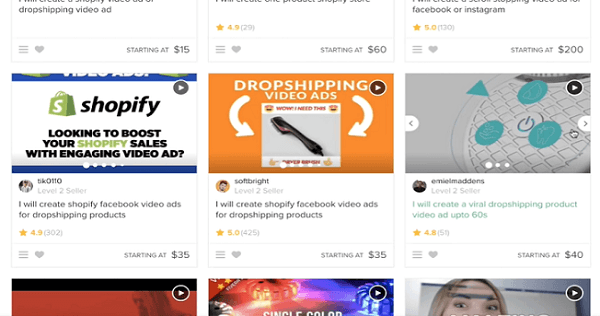
Jessica: Oh, okay, so this is almost a show-reel of their work?
Paul: Yeah. This one I’m not particularly too fond of, let’s just see if they have any…
Jessica: That one looks pretty cool, maybe.
Paul: Yeah. The font they’ve used, the slide in transition effect. That’s a lot of effort.
Jessica: Yeah. Oh, yay! A beard accessory.
Paul: There you go.
Jessica: You’re the pro. I like how they have steps ’cause it makes me wanna watch all the steps of this video. Now, you said I wanna now ask the seller… Say I’m satisfied with the videos, I’ll want to now ask the seller if they source their videos themselves, right?
Paul: Yes.
Jessica: And for that, I could contact seller and say exactly that and see what they get back to me with?
Paul: Yeah. Ask them, “Will you be able to provide the footage?”
Jessica: They’re online, so I’m gonna ask. “Do you provide your own footage?” Is that it?
Paul: Maybe be more specific. You could say, “Will you be able to find the footage?”
Jessica: “Will you be able to find the footage… “
Paul: “For this product.”
Jessica: “For this product?” Do I need to link to a particular product?
Paul: Yes. As an example, link to the AliExpress products, and then that’s all you have to give them, then they’re gonna be doing the research for you.
Jessica: You recommended the pendant love necklace in a past video, so I’m gonna go ahead and ask them about that now.
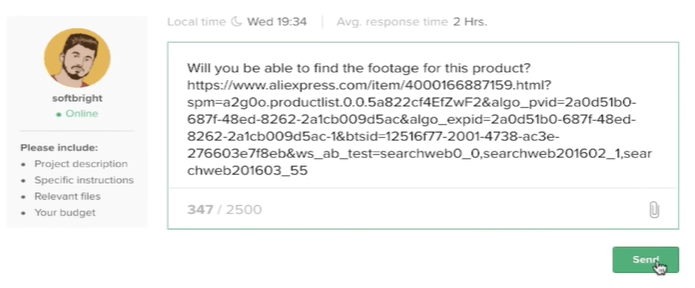
Jessica: Cool. So then you would work with this video editor to create your video ad. What happens next?
Creating the Video Script
Paul: What happens next is it typically takes one to two days. While you’re ordering that video, you wanna give them the script. I never let these guys write my script for me. I pretty much create the script and it’s derived from the product page as well. From Facebook Ads formula perspective, it is important to create the best video possible and this includes the script and how you promote the product.
Jessica: I see.
Paul: The best features and benefits, you want to put those in your script and then give that to your video editor.
Jessica: Talk to me about the first couple of seconds and the last couple of seconds of the video.
Paul: Okay. The first five seconds, always the most eye-catching, always the most… You cannot ignore it. When it’s on your screen, on your newsfeed, it gravitates, it demands attention, essentially. And then the last five seconds or the last couple seconds, that’s gonna be your call to action. “It’s 50% off, click the link down there, tap the Buy Now button,” things like that.
Jessica: So you’re a big fan of including discounts in your video ads.
Paul: I like to do that. Yeah.
Jessica: Okay, cool. Okay. Then for this product, in particular, what would you tell the Fiverr editor to put as your first five seconds?
Paul: For this one, it’s an aesthetic-based product, it depends on your look. So I would try to find footage that demonstrates the fashion of it, the fashion appeal, the aesthetics, and the most eye-catching, essentially.
Jessica: Okay. You’re the only merchant to take the fashionable angle.
Paul: Really?
Jessica: Am I making you insecure?
Paul: No. I’m wondering what they did.
Jessica: Yeah. The other merchants all focused on the fact that this prevents people from dropping their phones.
Paul: No, see. That’s not right.
Jessica: No?
Paul: Yeah, ’cause you appeal to emotion before you appeal to logic. So if you appeal to logic, “That’s a phone… ” That’s just my opinion.
Jessica: Yeah. So you would show how fashionable this is, show that it’s something really iconic. And then show, “Oh, by the way, it keeps your phone safe.”
Paul: Yeah, that’s what I would do.
Jessica: Interesting. Alright.
Paul: ‘Cause it’s chic. It’s got that grungy… I don’t know what the appeal is, but something like that.

Key Elements to Include in Your Facebook Ads Formula
Jessica: Alright. Interesting. Ever the contrarian, Paul. Now that we have an idea of what that video might look like, let’s dive into Facebook Ads Manager and figure out our Facebook ads formula to set up this campaign.
Paul: Let’s do it.
Jessica: Alright. So I’m in Facebook Ads Manager. This is an ads manager account for my own test store. First, what’s my marketing objective? Let me guess. Conversions.
Paul: You got it. That’s what you do. Always.
Jessica: Everyone said “conversions”. Is there any debate anymore in the dropshipping community about whether to start with conversions or not?
Paul: The highest seven-figure to eight-figure dropshippers, they’re all using conversions. And some people like to do PPE. If you have a certain funnel in place, it could work, but you really want to get purchases, so “conversions” is the best for that.
Jessica: Cool. Now on this topic, dropshippers disagreed: Campaign budget optimization. Should I turn it on or not?
Paul: So I always don’t use it.
Jessica: Don’t.
Paul: I tested both of them, CBOs versus non-CBOs for my Facebook ads formula, for testing and for my winning products when I was scaling to several thousand. The non-CBOs always performed better. And that’s just from my experience. And especially when you’re testing a product, you’re not sure because Facebook sometimes, they don’t prioritize the budget accordingly. They put budget into bad ad sets, bad performing ad sets, and I want to have that full control over the costs of the best-performing ad sets.
Jessica: Okay. So I’m not gonna press CBO, and instead, it’ll be my responsibility to make sure that I’m allocating budget, right?
Paul: Exactly.
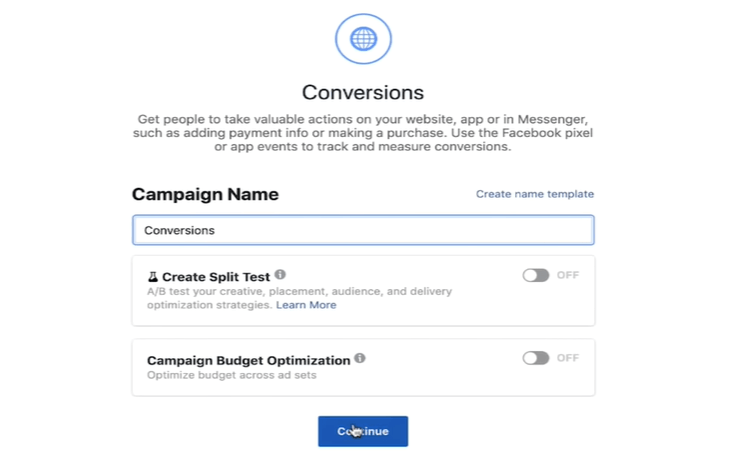
Jessica: Okay. I’ll press continue. Now let’s talk about the conversion event for the actual ad set. As you can see, my pixel doesn’t have very much data on it. What should I choose as my objective here?
Paul: Purchase, definitely.
Jessica: Even though I haven’t had any purchases?
Paul: It doesn’t matter. Purchase.
Setting a Target Audience and Interest
Jessica: That’s what you guys all said. Okay. Purchase. You got it. And then anything you would check here or are we going right into “audience”?
Paul: Right here, we would go right into “audience”. With the locations, I do the top high GDP countries, the top-tier countries. And these are a list of about 15 countries.
Jessica: Oh, 15. Where do you get that list?
Paul: To get that list, you guys can check out my YouTube channel.
Jessica: You have your list of 15 countries that you would put in for locations. What about age or gender? Would you put any constraints on that?
Paul: I typically don’t. The thing is, a lot of times, beginners, they assume too much of their audience. They assume that this product is gonna be sold only to older people or younger people. A lot of the time it’s the exact opposite. So I always leave it very general, very open. But a product like this is clearly towards women. So I would have that filter, but the ages, I leave it 18-65. Facebook Ads formula can do the rest.
Jessica: You would target this only towards women?
Paul: Yes, I would.
Jessica: What if I told you that our male office manager wore this?
Paul: Really?
Jessica: Yeah.
Paul: Well, then that’s a clear example of how I assumed… Exactly, you proved me wrong.
Jessica: Okay. This is the only time I will ever prove you wrong. So you might leave it at all genders, then?
Paul: I would. If I had any insights like that, any information like that, then yeah.

Jessica: What I’m wondering is, you’re creating this as one ad set, with the 15 different countries?
Paul: Mm-hmm.
Jessica: Okay, wow, it’s gonna be huge, right? Are you gonna narrow it down with interests at this point?
Paul: Yeah, so each ad set only has one interest, essentially.
Jessica: So every ad set has the 15 countries, but then each ad set has one interest?
Paul: Yeah, actually all the ad sets have the same exact settings and everything, the placements, everything’s the same. The only thing that’s different is interests.
Jessica: I see. What would be an example of an interest that you might put here? We’ll go ahead and press edit, what might show up here?
Paul: Whenever you’re doing the process of the first ad set, you want to… This is for brainstorming purposes. So what I would do is, like I said, I don’t think too much about the targeting, I just type in “handbag” and that doesn’t mean I’m gonna end up with that.
Jessica: So, “handbags” there?
Paul: Yes, I would choose handbags and then immediately hit “suggestions”, hit “fashion accessories”, and again, as I said, we’re not determining that these are gonna be the last ones, but this is for ideas.
Jessica: Now, these would be already two different ad sets, for example. One would be targeting “fashion accessories”, another ad set would target “messenger bag”.
Paul: Exactly.
Jessica: I see. Okay.
Paul: Right here, I’m clicking on anything that is relevant to our products. Coin purse, hand luggage.
Jessica: Interesting, really broad.
Paul: Yeah, wallets. I’d say that’s good for now, but usually, you would go a little further.
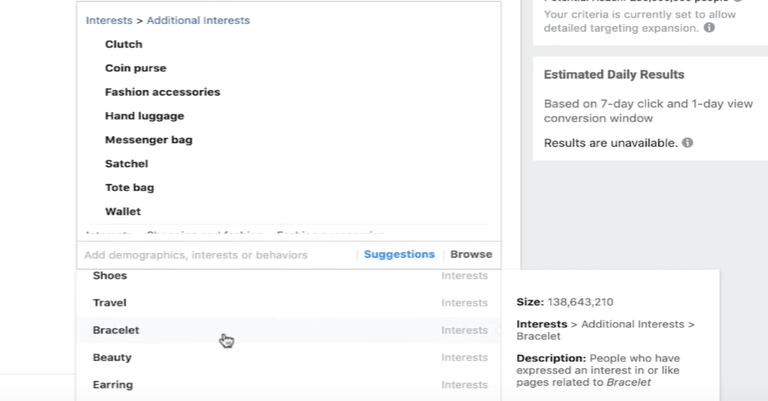
Jessica: Let me challenge you on something.
Paul: Sure.
Jessica: Kory and Rodney said that they would just target people who had iPhones.
Paul: I disagree with that because everybody has an iPhone, but they’re not all interested in fashion or these accessories. So you want to focus on… Just assume that everybody has a phone, and then target specifically fashion. That’s what I think. The fashion, the accessory, that category.
Jessica: Okay.
Paul: I would also go further into this. I would Google for inspiration. You can search “best handbag brands”, and then I would get some inspiration. What brands am I not aware of that I could potentially use? Right here we see Celine, Fendi, Gucci. Let’s click this right here, and we have a bunch of options. These are potential interests.
Jessica: I really feel like that makes sense because I think this design is fashionable. Someone who wants to spend so much on a handbag is probably willing to spend something on a phone accessory that makes their phone look chic and also keeps it handy. So if they’re wearing something like a satchel or a cross-body tote, something that’s already across their shoulders, they’d probably like something that fits the same way.
Paul: Yeah.
Automatic vs Edit Placements
Jessica: Cool. Okay, let’s move down to placements. Automatic or edit?
Paul: Automatic.
Jessica: Really?
Paul: Automatic.
Jessica: You’re the second merchant to say “automatic”. And I thought everyone was going to say edit placement.
Paul: Who is the first merchant?
Jessica: Emma said automatic as well.
Paul: She knows her stuff.

Jessica: That is so interesting. So even though… Okay, let’s talk about that Fiverr editor. Are we telling them to create a video of a certain dimension so that it can go into both Facebook and Instagram stories?
Paul: No, because like I said, with the minimal approach, we just want one video and if it works, then you can maybe do the custom dimensions and stuff like that, but it will work. If somebody sees that on your story, they’re not gonna judge it because it’s not in the right Instagram story custom dimension.
Jessica: Okay. So the argument is if the product is good enough, and the video is good enough, you’re gonna start seeing the numbers that let you know this is working.
Paul: Exactly, yeah.
Jessica: Cool. And what else do we need to know about targeting?
Paul: Let’s say we ended up with these, I would actually include a little bit more. Let’s say we were only gonna create five ad sets, so that means we have to narrow down to five interests. These five interests, they have to be the best because you’re determining the products’ results based on these interests. Like our criteria, we said earlier, broad, diverse, and relevant…
Jessica: You just said broad, diverse and relevant?
Paul: Mm-hmm.
Jessica: If you don’t remember that conversation, it’s here.
Paul: Which one is not like the other? We’re selling a phone carrying case, a messenger bag is a little bit of a stretch, so we’re gonna exclude that. Tote bag, it’s a little bit of a stretch as well. Handbags, maybe. Coin purse, it’s 2 million audience size, it’s a little bit smaller than the rest, so I probably am going to exclude that. Fashion accessories, it’s very, very general, very broad, let’s leave it for now. Hand luggage, let’s see what that is ’cause as a male, I’m not exactly or sure what… Should I say that?
Jessica: I think it might be carry-on luggage.
Paul: That’s probably what it is.
Jessica: Yeah, I think it’s a British way of saying carry-on luggage.
Paul: That’s obviously not relevant, so we would exclude that. So, we’re left with these. And again, you would do some more brands and stuff, maybe keep it more diverse, maybe Kate Spade. I know they have some kind of similar handbags. And then, I would exclude satchel because it’s a little bit of a stretch. And yeah, that’s the process. We’re landing with these five, and then essentially you’re gonna duplicate these ad sets four times. That way each ad set has its own interest.
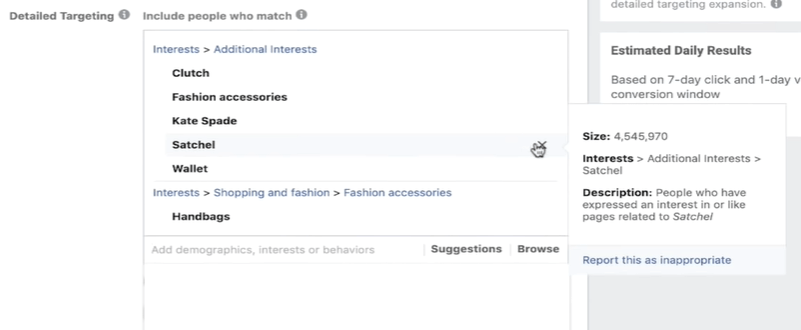
Jessica: And you’re not looking at the audience size, you don’t really care about that?
Paul: Not yet, not yet. Because I see right here we have the audience sizes next to the interests, so as long as that’s above a million, we’re good.
Jessica: Okay.
Paul: And then you also wanna make sure you never select expand your detailed targeting. This is such a huge mistake people do, it never works, just leave that unchecked. And then also, all languages, I don’t do any English-only, English speaking, I don’t do any of that. And yeah, that’s as far as the targeting.
Jessica: Wow, it’s really cool to hear you think through that targeting. That’s really helpful, I think, for our viewers.
Paul: And I also didn’t do the full extensive. I would have done a little bit more research on the brands, on the products that are related to these products, things like that. Googling around, maybe spend about 10 minutes on this.
How Budget Fits Into Your Facebook Ads Formula
Jessica: Okay. Now, let’s talk about a Facebook ads formula biggie: Budget. What budget do you put aside per day for this ad?
Paul: Each ad set has $10 on it.
Jessica: $10, okay. So you’re looking at $50 a day with our five ad sets with five different interests.
Paul: Mm-hmm. That’s the cost right now, yeah.
Jessica: That’s dropshipping for you. I’ll put $50 or sorry, I’ll put $10 here ’cause this is one ad set. And anything else you would change here?
Paul: And that’s that.

Jessica: Cool. So we’ll hit continue.
Paul: I actually wouldn’t do that.
Jessica: Oh, okay.
Paul: Yeah. But yeah, this thing, you can’t un-check it though.
Jessica: So, I made a mistake. I just got to the ad creative section, and I assumed that since we chose automatic placements, I should choose my Instagram account. I selected my Instagram account, and you just told me… Oops, we can’t un-check it, and that was a bad thing to do.
Paul: Yeah, so the thing is, you don’t want people clicking on your Instagram account whenever they see that Instagram ad. If your Instagram page only has 100 followers, maybe two posts, it doesn’t have a good reputation. As opposed to if they couldn’t even click on your Instagram, then there’s no damage to be done, essentially.
Jessica: Oh, instead they would see the ad on Instagram, but it would take them to whatever site I specify.
Paul: Yeah, they couldn’t even click on your…
Jessica: Ohhh.
Paul: Exactly.
Jessica: That’s a great tip, though. If you’re just starting out and you have no Instagram followers, you can still advertise on Instagram without people being like, “They have no followers. What is this business?”
Paul: Exactly.
Video Format and Ad Copy
Jessica: I didn’t know that. Really good tip. Okay, I’m not gonna touch anything. What else should I do? For format, should it be “single image or video”?
Paul: Yes, “single image or video”, and then we import our picture or video that we got, and then we insert the ad copy.
Jessica: Where do I begin?
Paul: The first section of the ad copy is gonna start off with a hook.
Jessica: Hook.
Paul: And a hook statement is a five- to seven-word sentence grabbing their attention and featuring the best information that they need to know, why they should care about your product.
Jessica: For something like this, what would you put as a hook?
Paul: I would say something… I took some notes earlier. The purpose of the hook is to get them to click on the link. A product like this is very aesthetic based, so you could say something along the lines of, “A slim cross body for when you only need your essential… Effortlessly chic.” Throwing some marketing words in there and very imagery based and very sense based. I would end it right there. “An effortlessly chic crossbody… “

Jessica: “Effortlessly chic crossbody…, For when you only need your essentials?”
Paul: Exactly, yup. And then you’d have some sort of emoji, like right finger-pointing or an arrow or something. And then you’d have a very short link and I would not recommend a Bit.ly link.
Jessica: No?
Paul: Yup.
Jessica: Why not?
Paul: Because Bit.ly links, I think many people know this by now, you can have a plus sign at the end of it, and then they can see your analytics, they can see how many people clicked on it, when they clicked on it. That’s very, very valuable information for your competitors. So I only use the Shopify link. And then some people are like, “The Shopify link is too long.” So with the URL, you wanna have the URL just be one word. So if the product title for this product was “Slim fit cross-body bag,” you would just have…
Jessica: Store name.com/products/slim?
Paul: Yeah. Something along the lines of that.
Jessica: Cool, and that’s it for the text caption.
Paul: We’d have a little bit more. We’d have the last sentence be a call to action. So typically I phrase this something like, “Now 40% off. Get yours here.” Or you could say something like, “Limited supply only. Selling out fast.” Some sort of marketing call to action.
Jessica: With a little bit of urgency to it.
Paul: With a little bit of urgency, yeah.
Jessica: Okay. Headline and description.
Paul: Headline is another variation of the hook, so you could rephrase that hook statement. So, for this example, you could say something like, “A timeless accessory that is effortlessly chic.”
Jessica: Okay so, headline, “Effortlessly chic. Effortlessly elegant.” And then, the description would be, “A timely accessory”?
Paul: Yeah, so the description is very short, it’s only one line, so I would include marketing as well in there. I’d say, “Limited supply only. Tap now to shop.”
Jessica: “Tap now.” Okay.
Paul: ‘Cause people are on their phones.
Jessica: Oh, good thinking. “Limited supply only, tap now.”
Paul: “Tap now to shop.”
Jessica: “To shop.” And then obviously we’d put the product page as our website URL.
Paul: Mm-hmm.

Jessica: Call to action…
Paul: “Shop now.”
Jessica: “Shop now.” You know, Emma would actually test that.
Paul: Really?
Jessica: Yeah.
Paul: What’d she do?
Jessica: She would test “shop now” versus other options.
Paul: Interesting.
Jessica: Yeah. Take that back with you. Anything else you would change here before we launch?
Paul: That’s it. You could have some longer ad copy. Facebook only shows the first three lines of text, but you could also add some features and stuff and more content in there. So you could have the first two lines being a hook statement, then the link, then you could also have features, a list of four of five futures, bullet points, checkmarks, and very short concise features, and then another call to action, and then another link. That’s a longer form.
Jessica: I see. And once this ad is launched and we’re spending $50 a day on all those five ad sets, when are you gonna cut off the ad? How do you tell if it’s winning or losing?
Paul: Yeah, so right when it’s spending, you’re gonna wait at least three to four hours, and then you can go back and see if the cost per unique link click. If it’s less than $2, keep it running. If it’s anything higher than $2, you can kill it. You have permission to kill it, and you can assume that because it’s expensive now, it’s gonna be expensive in the future.
Jessica: After just three to four hours?
Paul: Yeah.
Jessica: Wow, okay. You move fast.
Paul: Yeah, I don’t like to spend any money on non-potential products, essentially.
Jessica: That’s awesome. Cool. Thanks for all your helpful advice today on Facebook ad formulas.
Paul: Yeah, no problem.
Jessica: Alright, what do you think about Paul’s Facebook ads formula? Do you think the ad would be effective at converting traffic? What would you change in his strategy? Leave a comment and let me know. I’ll chime in with my thoughts, and the dropshippers my chime in with their thoughts, too. Until next time, learn often, market better, and sell more.



